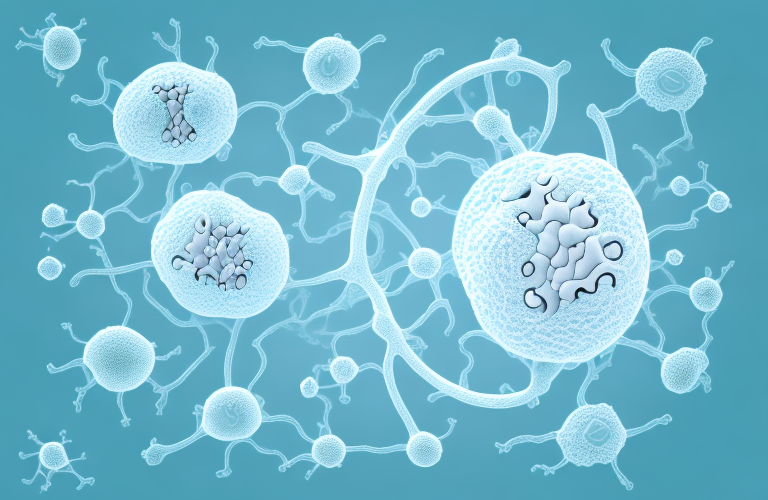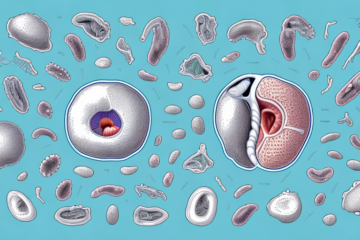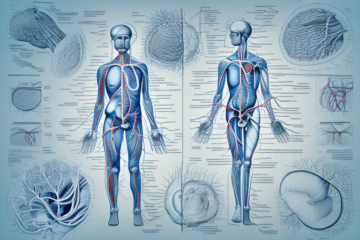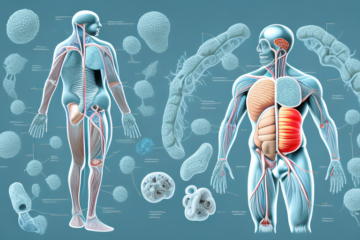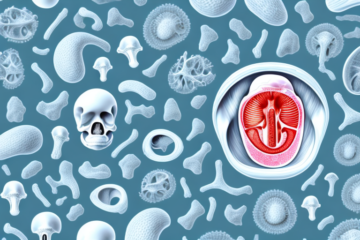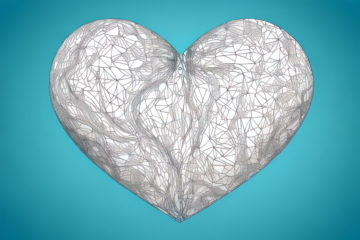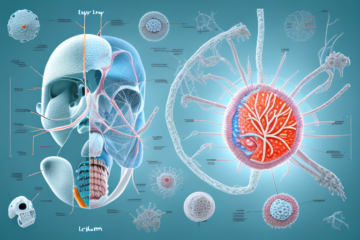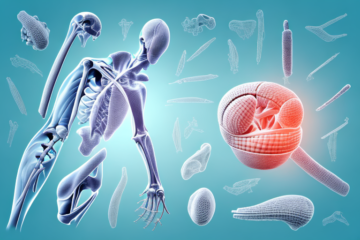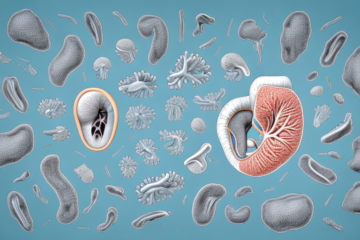Mammary glands are a distinguishing characteristic of mammals, and are responsible for the production and secretion of milk during lactation. They develop from the embryonic mammary ridge and undergo significant changes throughout a mammal’s life. In this article, we will explore the evolution, composition, and functions of mammary glands, and provide insights into the latest research in this field.
The Evolution of Mammary Glands in Mammals
The evolution of mammary glands can be traced back to the ancestor of modern-day mammals. These glands have evolved from apocrine sweat glands through a process known as exaptation, or the adaptation of an existing structure for a new function. Mammary glands originally developed as a way to provide nutrition to offspring, and have been a defining characteristic of mammals ever since.
Interestingly, the development of mammary glands in mammals has also been linked to the evolution of social behavior. In species where mothers provide extended care to their young, such as primates and some rodents, the development of mammary glands has been more pronounced. This suggests that the evolution of mammary glands may have been influenced not only by the need to provide nutrition to offspring, but also by the social dynamics of early mammalian communities.
The Role of Hormones in Mammary Gland Development
Hormones also play a critical role in the development of mammary glands. During puberty, estrogen and progesterone stimulate the growth and development of these glands in females. Prolactin, another hormone, is responsible for the production of milk during lactation.
In addition to estrogen, progesterone, and prolactin, other hormones also contribute to mammary gland development. Growth hormone, for example, is necessary for the proliferation of mammary gland cells. Insulin-like growth factor 1 (IGF-1) also plays a role in mammary gland development by promoting cell growth and differentiation.
Furthermore, hormonal imbalances can lead to abnormal mammary gland development. For instance, excessive exposure to estrogen can cause the mammary glands to grow uncontrollably, leading to the development of breast tumors. On the other hand, insufficient levels of estrogen can result in underdeveloped mammary glands, which can affect lactation and breastfeeding.
The Structure and Composition of Mammary Tissue
Each mammary gland is composed of glandular tissue, which produces milk, and ductal tissue, which transports milk to the nipple. The glandular tissue is made up of clusters of milk-producing cells called alveoli, which are connected to the ducts that lead to the nipple. Additionally, each mammary gland is surrounded by a network of connective tissue that provides support and structure.
The composition of mammary tissue can vary depending on the stage of lactation. During pregnancy, the glandular tissue undergoes significant growth and development in preparation for milk production. After birth, the alveoli produce milk in response to hormonal signals, and the ducts transport the milk to the nipple for nursing. As lactation continues, the composition of the milk changes to meet the nutritional needs of the growing infant.
Mammary tissue can also be affected by various factors, such as hormonal imbalances, infections, and tumors. Breast cancer, for example, can develop in the glandular or ductal tissue and can spread to other parts of the body if not treated early. Regular breast exams and mammograms can help detect any abnormalities in the mammary tissue and ensure early intervention if necessary.
The Different Types of Mammary Glands in Humans and Animals
There are various types of mammary glands in humans and animals. For example, humans typically have two mammary glands located on the chest, while cows have four mammary glands located on the underside of their bodies. The number and location of mammary glands often correspond to the number and size of offspring that need to be fed.
Other animals, such as dogs and cats, have multiple pairs of mammary glands located along their abdomen. In some species, such as elephants, mammary glands are located between the front legs. Mammary glands also differ in size and shape between species. For instance, the mammary glands of mice are small and located along their sides, while the mammary glands of whales can be several meters long and located along their ventral side. Despite these differences, all mammary glands produce milk that provides essential nutrients for the growth and development of offspring.
The Function of Mammary Glands During Pregnancy and Lactation
During pregnancy, the mammary glands prepare for lactation by increasing in size and producing colostrum, a form of milk that is rich in antibodies and nutrients. After delivery, the mammary glands begin to produce milk in response to the hormone prolactin, which is released by the pituitary gland. The milk is then transported through the ducts and released through the nipple in response to suckling.
It is important to note that the composition of breast milk changes over time to meet the changing nutritional needs of the growing infant. In the first few days after birth, the milk is rich in colostrum, which provides the baby with essential antibodies and immune factors. As the baby grows, the milk becomes higher in fat and calories to support their increasing energy needs.
Additionally, breastfeeding has been shown to have numerous benefits for both the mother and baby. Breast milk contains all the necessary nutrients for a baby’s growth and development, and has been linked to a reduced risk of infections, allergies, and chronic diseases later in life. For mothers, breastfeeding can help reduce the risk of breast and ovarian cancer, and can also promote bonding with their baby.
Common Breastfeeding Issues and How to Overcome Them
Although breastfeeding is a natural and healthy way to feed your baby, it can also be challenging. Some common issues include latching difficulties, engorgement, and mastitis. However, with proper support and guidance, most women are able to overcome these issues and successfully breastfeed.
It is important to note that every woman’s breastfeeding journey is unique and may come with its own set of challenges. Some women may experience nipple soreness or cracked nipples, while others may struggle with low milk supply. Seeking help from a lactation consultant or breastfeeding support group can be beneficial in addressing these issues and finding solutions that work for you and your baby.
The Connection Between Breast Cancer and Mammary Glands
There is a strong connection between mammary glands and breast cancer. In fact, most breast cancers develop in the glandular tissue of the breast. Regular breast self-exams and mammograms can help detect breast cancer early, when it is most treatable.
It is important to note that not all breast lumps are cancerous. In fact, many breast lumps are benign and not harmful. However, it is still important to have any unusual changes in the breast checked by a healthcare professional. Some common signs of breast cancer include a lump or thickening in the breast or underarm area, changes in breast size or shape, nipple discharge, and skin changes such as redness or dimpling.
How to Perform a Breast Self-Exam for Early Detection of Abnormalities
Breast self-exams are an important tool for detecting breast cancer early. They should be performed monthly, ideally a few days after your period ends. To perform a breast self-exam, use your fingers to examine the entire breast, including the armpit and collarbone area. Look for any lumps, changes in size or shape, or discharge from the nipple.
It is important to note that not all lumps or changes in the breast are cancerous. However, if you do notice any changes, it is important to schedule an appointment with your healthcare provider for further evaluation. In addition to performing regular breast self-exams, it is also recommended that women over the age of 40 receive regular mammograms to screen for breast cancer.
It is also important to maintain a healthy lifestyle to reduce your risk of developing breast cancer. This includes maintaining a healthy weight, exercising regularly, limiting alcohol consumption, and avoiding tobacco products. By taking these steps and performing regular breast self-exams, you can help detect any abnormalities early and increase your chances of successful treatment.
The Benefits of Breastfeeding for both Mother and Baby
There are numerous benefits to breastfeeding for both mother and baby. Breast milk contains the ideal balance of nutrients and antibodies, and has been shown to reduce the risk of infections, allergies, and chronic diseases in babies. Additionally, breastfeeding has been linked to a lower risk of breast and ovarian cancer in mothers.
Furthermore, breastfeeding can also promote bonding between mother and baby. The skin-to-skin contact and physical closeness during breastfeeding can help create a strong emotional connection between the two. Breastfeeding can also provide a sense of comfort and security for the baby, which can lead to better sleep and less fussiness.
It is important to note that breastfeeding may not be possible or feasible for all mothers and babies. In these cases, formula can provide adequate nutrition for the baby. However, for those who are able to breastfeed, the benefits for both mother and baby are numerous and should be considered when making feeding decisions.
The Cultural Significance of Breasts and Breastfeeding
Breasts have long been a symbol of femininity and sexuality, and breastfeeding has been a topic of controversy throughout history. However, it is important to remember that breastfeeding is a natural and healthy process that provides essential nutrition to babies.
In many cultures, breasts are also seen as a symbol of motherhood and nurturing. Breastfeeding is not only a way to provide nourishment to a baby, but it also creates a strong bond between mother and child. Despite this, there are still many societal stigmas surrounding breastfeeding in public, which can make it difficult for mothers to feel comfortable and supported while feeding their babies. It is important for us to continue to educate ourselves and others about the benefits of breastfeeding and work towards creating a more accepting and supportive environment for breastfeeding mothers.
Supporting Breastfeeding in the Workplace: A Guide for Employers
The workplace can be a challenging environment for breastfeeding mothers. However, employers can take steps to support their employees by providing lactation rooms, flexible work schedules, and other resources. By supporting breastfeeding in the workplace, employers can help their employees achieve a better work-life balance and improve the health of their babies.
One of the biggest challenges for breastfeeding mothers in the workplace is finding the time and space to pump breast milk. Providing a designated lactation room can make a huge difference in supporting these mothers. The room should be private, clean, and equipped with a comfortable chair, a table, and an electrical outlet. Employers can also consider providing a refrigerator to store breast milk.
Flexible work schedules can also be a great way to support breastfeeding mothers. Employers can allow mothers to take breaks to pump breast milk or adjust their work schedules to accommodate their breastfeeding needs. This can help reduce stress and anxiety for mothers and improve their overall job satisfaction.
How to Properly Care for Your Breasts Throughout Your Life
Caring for your breasts throughout your life is important for maintaining their health and function. This includes wearing a properly fitted bra, moisturizing the skin, and performing regular breast self-exams. If you notice any changes in your breasts, such as lumps or discharge, seek medical attention right away.
In addition to these basic steps, there are other ways to care for your breasts. Maintaining a healthy diet and exercise routine can help reduce the risk of breast cancer and other breast-related issues. It’s also important to limit alcohol consumption and avoid smoking, as these habits have been linked to an increased risk of breast cancer. Regular mammograms are recommended for women over the age of 50, or earlier if there is a family history of breast cancer. By taking these steps, you can help ensure the long-term health and well-being of your breasts.
Debunking Myths About Breastfeeding and Formula Feeding
There are many myths surrounding breastfeeding and formula feeding, such as the idea that formula is just as good as breast milk. However, research has shown that breast milk is the optimal source of nutrition for babies, and that breastfeeding has numerous benefits for both mothers and babies.
One common myth is that breastfeeding is painful and difficult. While some women may experience discomfort or challenges with breastfeeding, there are many resources available to help mothers overcome these issues. Additionally, breastfeeding can actually be a bonding experience between mother and baby, and can lead to a reduced risk of certain health conditions for both.
Another myth is that formula feeding is more convenient and allows for more freedom. While formula feeding may seem easier in some ways, it requires a lot of preparation and can be expensive. Breastfeeding, on the other hand, is always available and at the right temperature, and can save families money in the long run. It’s important for families to make the choice that works best for them, but it’s also important to have accurate information about the benefits and challenges of both breastfeeding and formula feeding.
The Future of Mammary Gland Research and Treatment Options
Research into mammary glands is an ongoing area of study, with scientists exploring new treatment options for breast cancer and other diseases. By understanding the structure and function of mammary glands, researchers hope to develop new therapies that can improve the health and well-being of both humans and animals.
In conclusion, mammary glands are fascinating structures that have evolved over millions of years to provide nutrition to offspring. They play a critical role in the development and health of mammals, and continue to be an area of active research and study. By understanding the function and importance of mammary glands, we can better appreciate the wonders of the natural world and the amazing capabilities of our own bodies.
One area of research that is gaining attention is the study of the microbiome of mammary glands. Recent studies have shown that the microbiome of mammary glands plays a crucial role in the development and function of the gland, as well as in the health of the host. Understanding the microbiome of mammary glands could lead to new treatment options for breast cancer and other diseases.
Another area of research is the use of stem cells in mammary gland regeneration. Scientists are exploring the potential of using stem cells to regenerate mammary glands after surgery or injury, which could improve the quality of life for patients who have undergone mastectomies or other breast surgeries.

